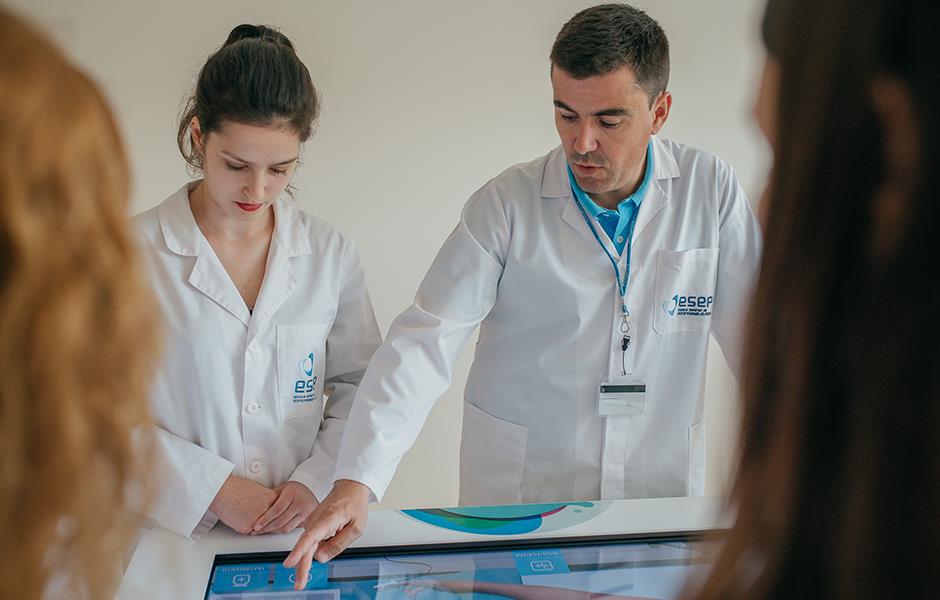A 68-year-old male, with chronic obstructive pulmonary disease, is admitted to the emergency room with aggravation of shortness of breath. What to do immediately? It is for “learning and thinking” in cases like this that from now on the Nursing School of Porto will be the first national nursing school to have a virtual clinical simulator for improving clinical decision-making skills of future health professionals.
The new system, developed during the last two years by a research team from CINTESIS – Center for Health Technology and Services Research, and ESEP; is completely adapted to the specific training needs of nurses.
The simulation table used by more than 300 future nurses, was already installed at ESEP. The equipment is known as Body Interact, developed and marketed by the company Take the Wind. The novelty is the software – one of a kind, that aggregates information regarding specific clinical scenarios to train nurses.
Miguel Padilha, CINTESIS researcher and professor at ESEP, refers that this is a “tool that is well adapted to the new student generations who know, have good command and prefer interactive learning systems”. The researcher and university professor quickly clarifies that this equipment is not just for making knowledge transmission more attractive.
“This simulation system was designed for nurses to train the processes of reasoning and decision-making, so that when confronted with real-life cases, they know how to take correct, quick and effective decisions. The physiological algorithm developed enables the machine to have dynamic reactions. In other words, the scenarios are always different and that promotes students’ cognitive skills training” he explains, and reveals that “the use of this simulator at the Nursing School of Porto, will make it possible to establish a threshold for students’ clinical decision-making skills, which, ultimately, will benefit the patients by increasing the quality and safety of health care.
Paulo Machado, CINTESIS researcher and professor at ESEP, also involved in the creation of this new teaching tool in the fields of Nursing, points out that this system is “adaptable to many default and fully dynamic clinical scenarios in the fields of cardiology, endocrinology, neurology, respiratory diseases, infectious diseases, trauma, pregnancy and paediatrics.”
The technology in question offers students and professionals a realistic experience with a virtual patient and complements current learning strategies in health education, contributing to a faster and more effective learning process.

